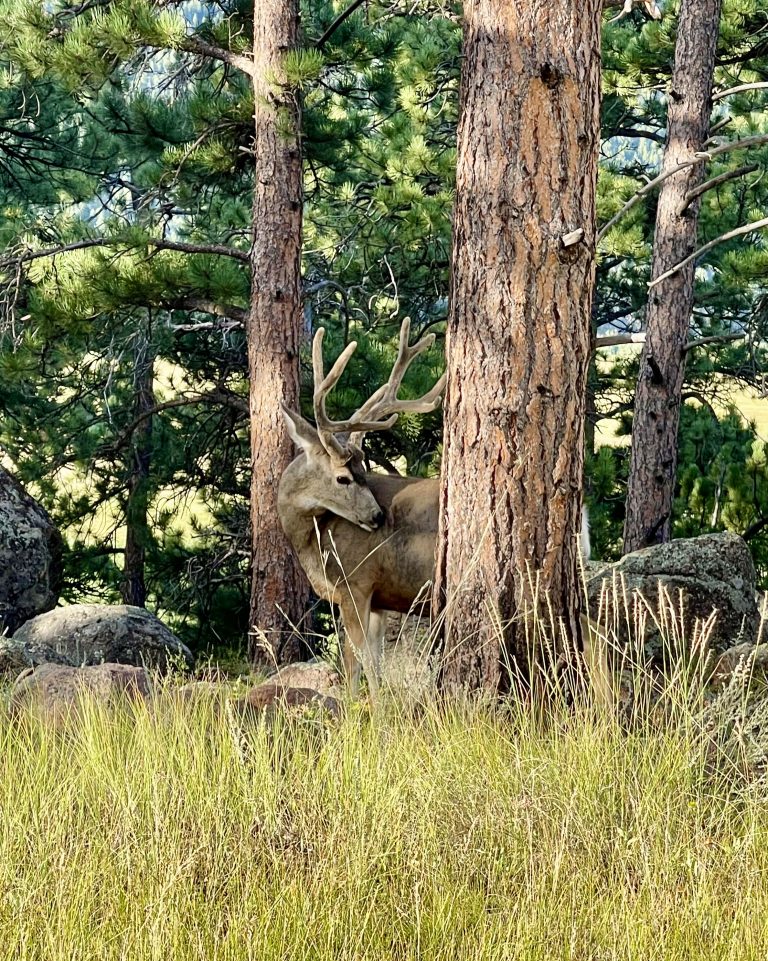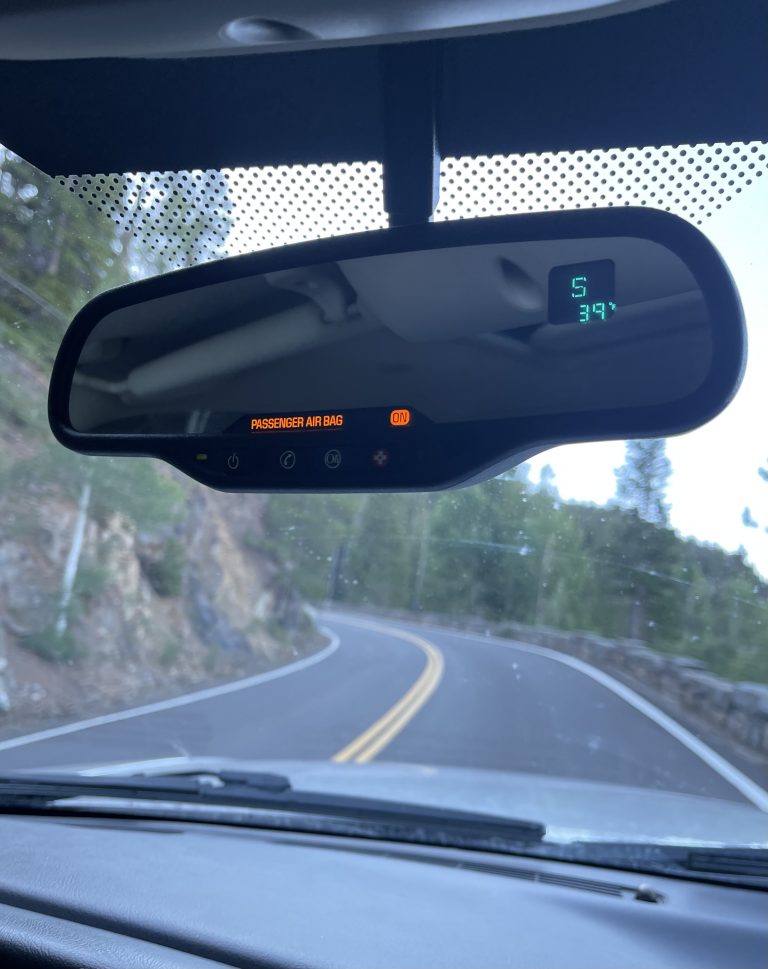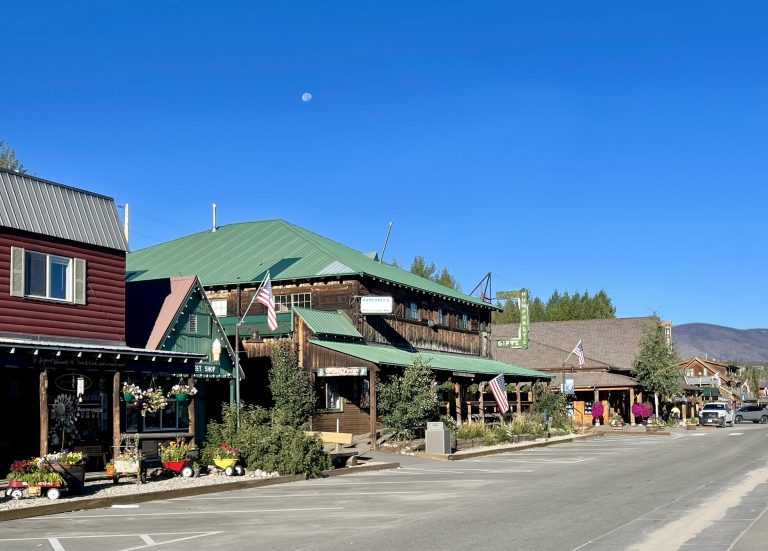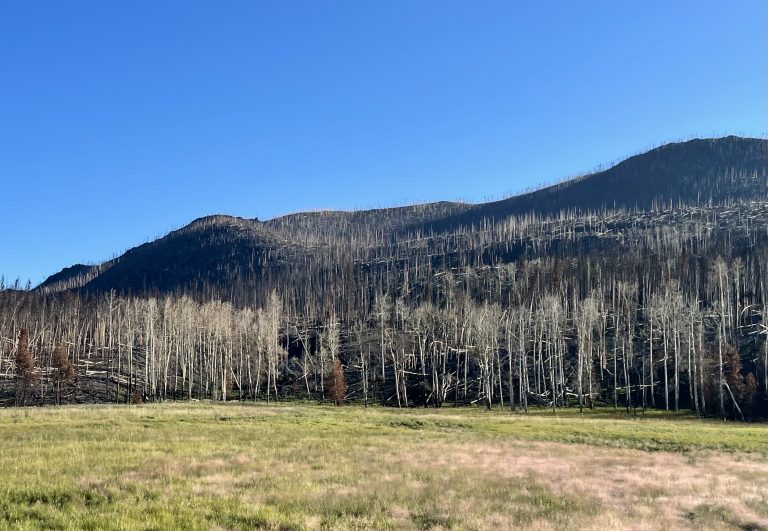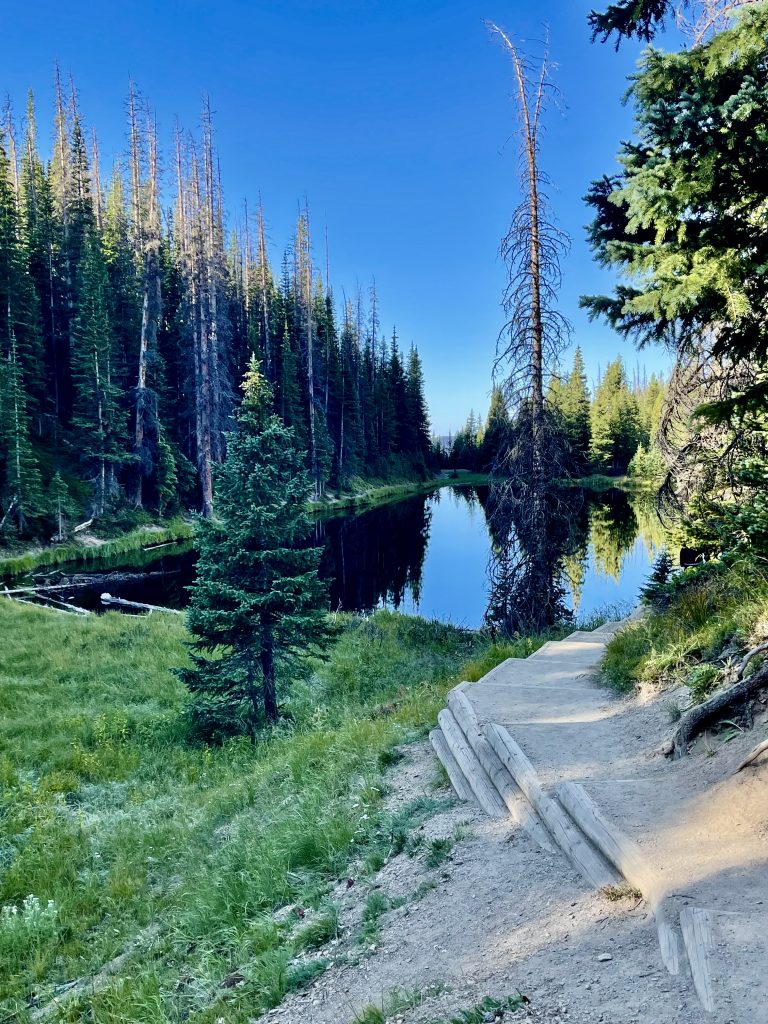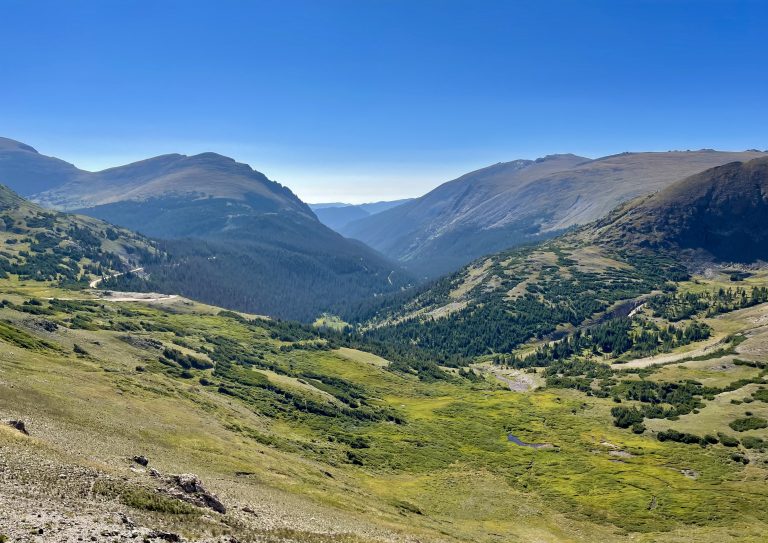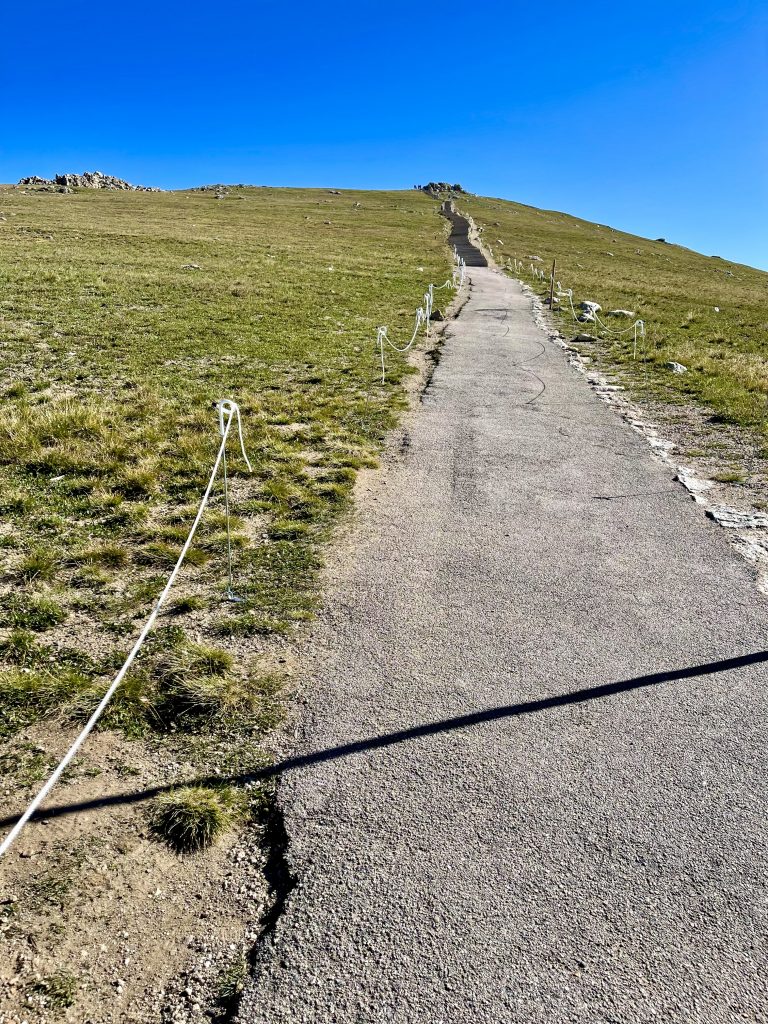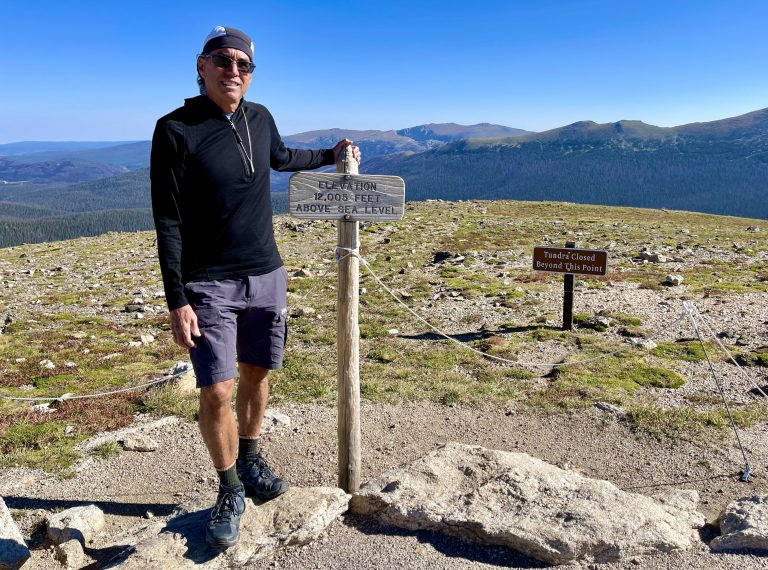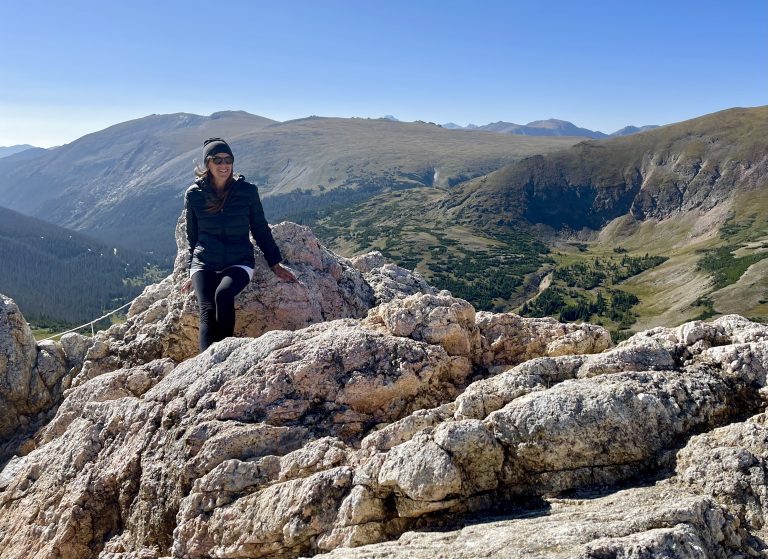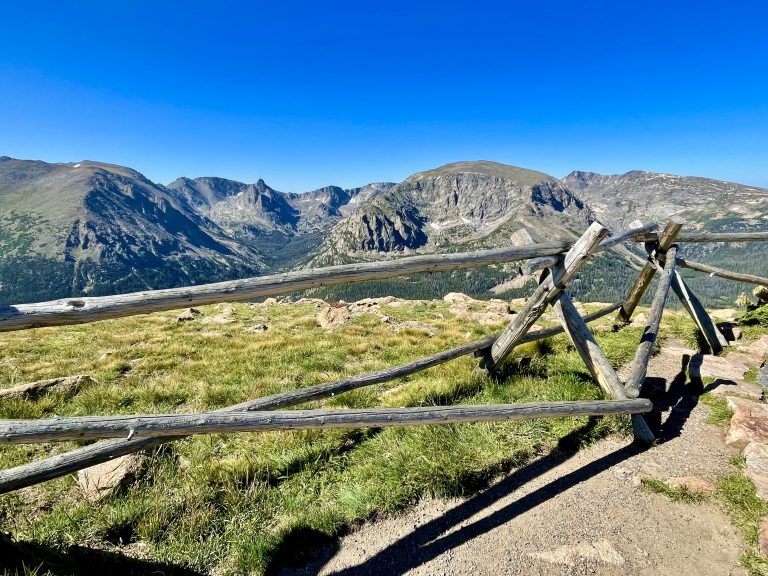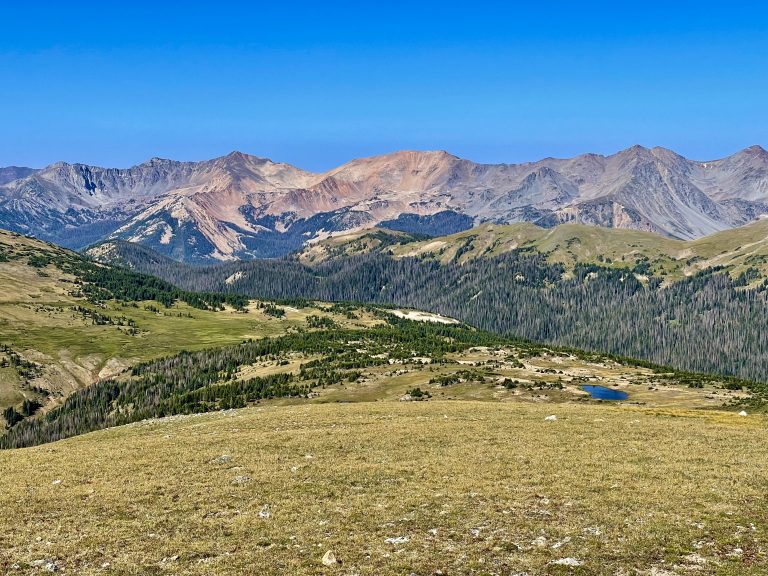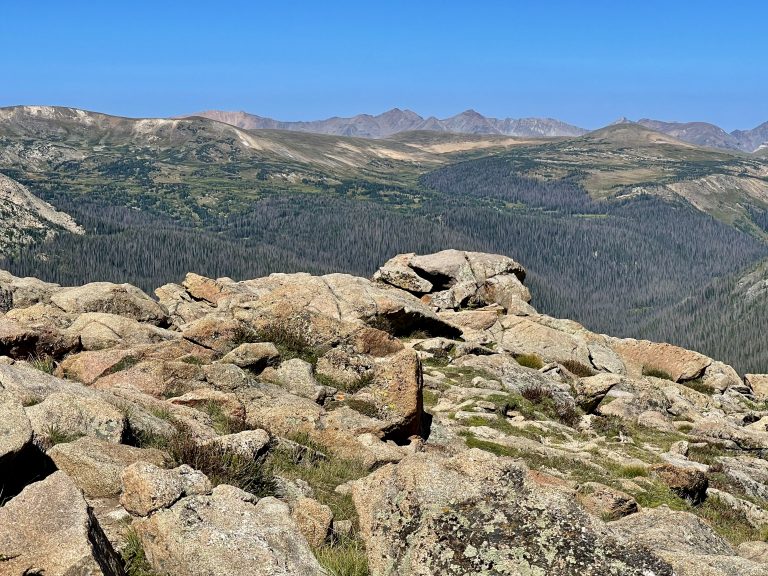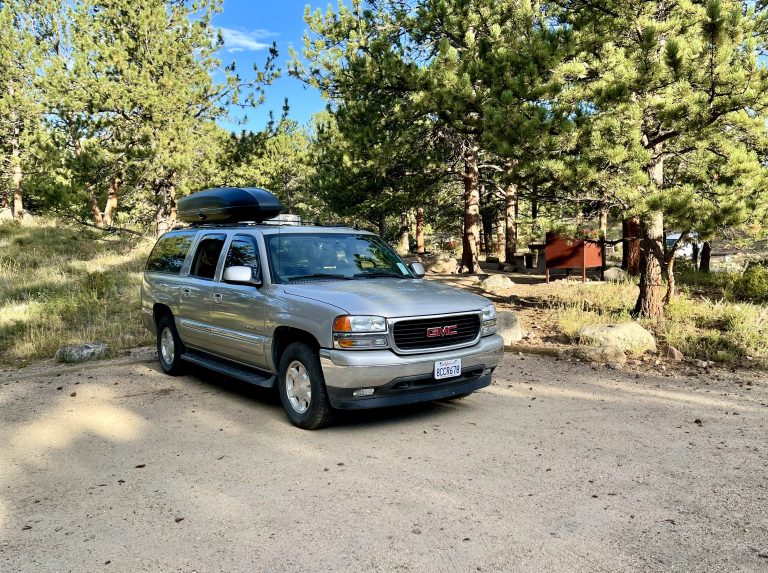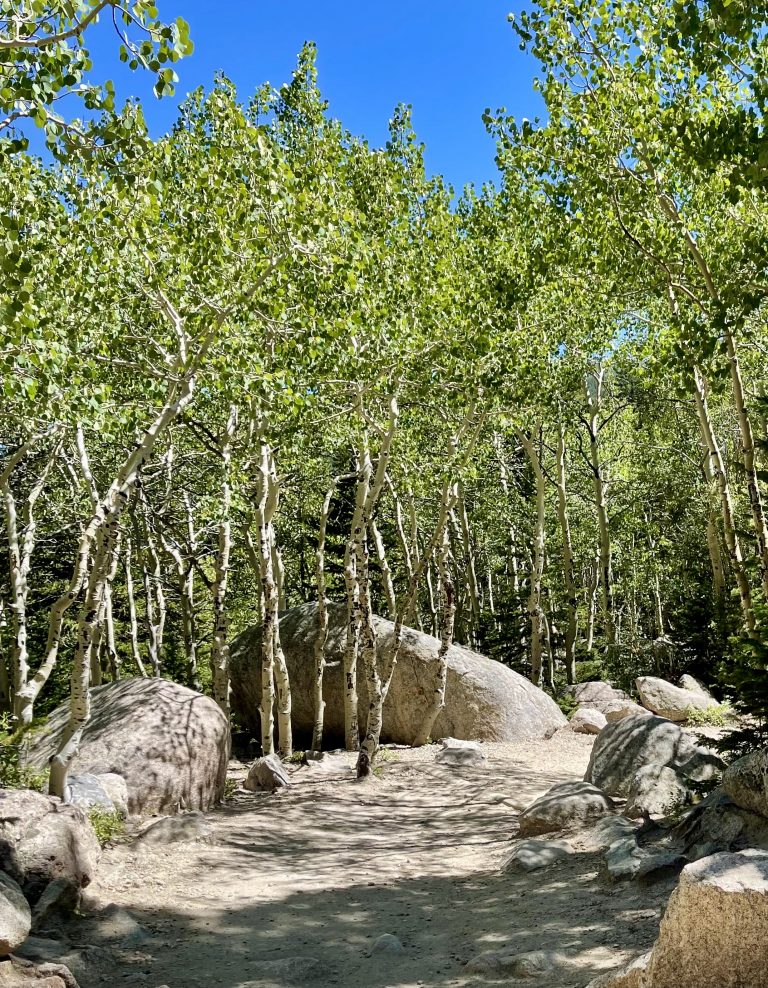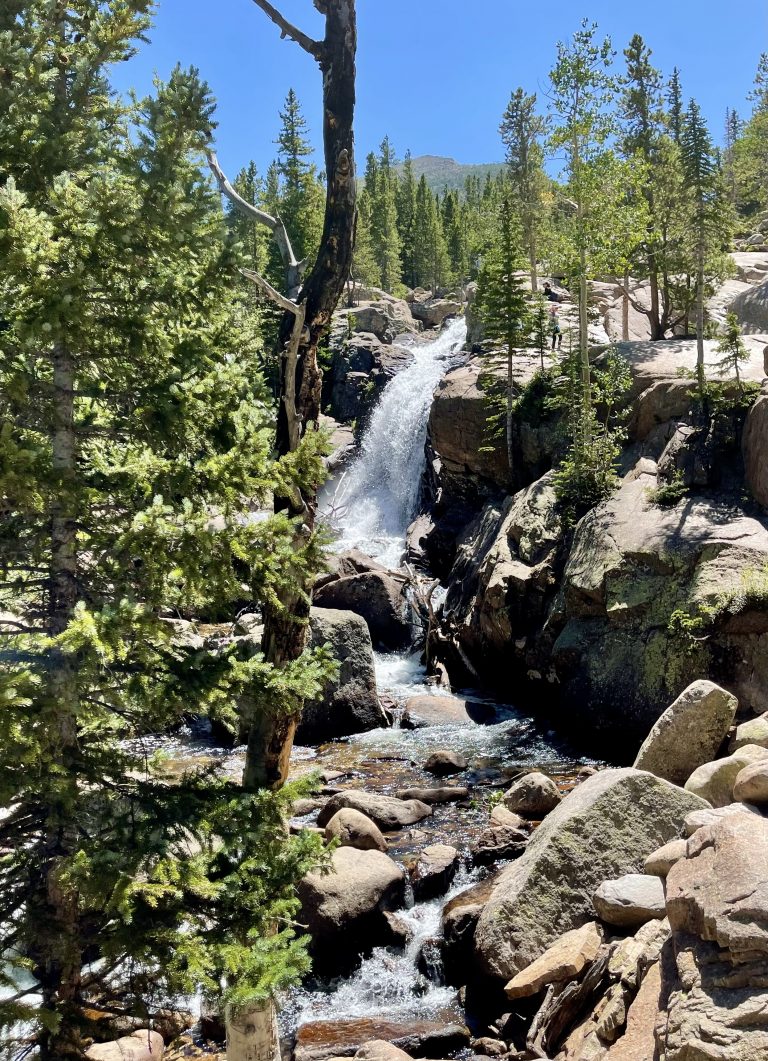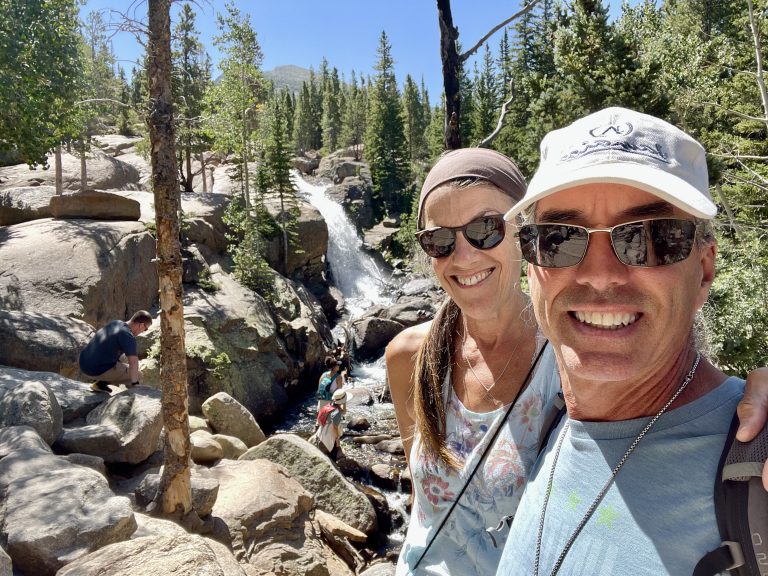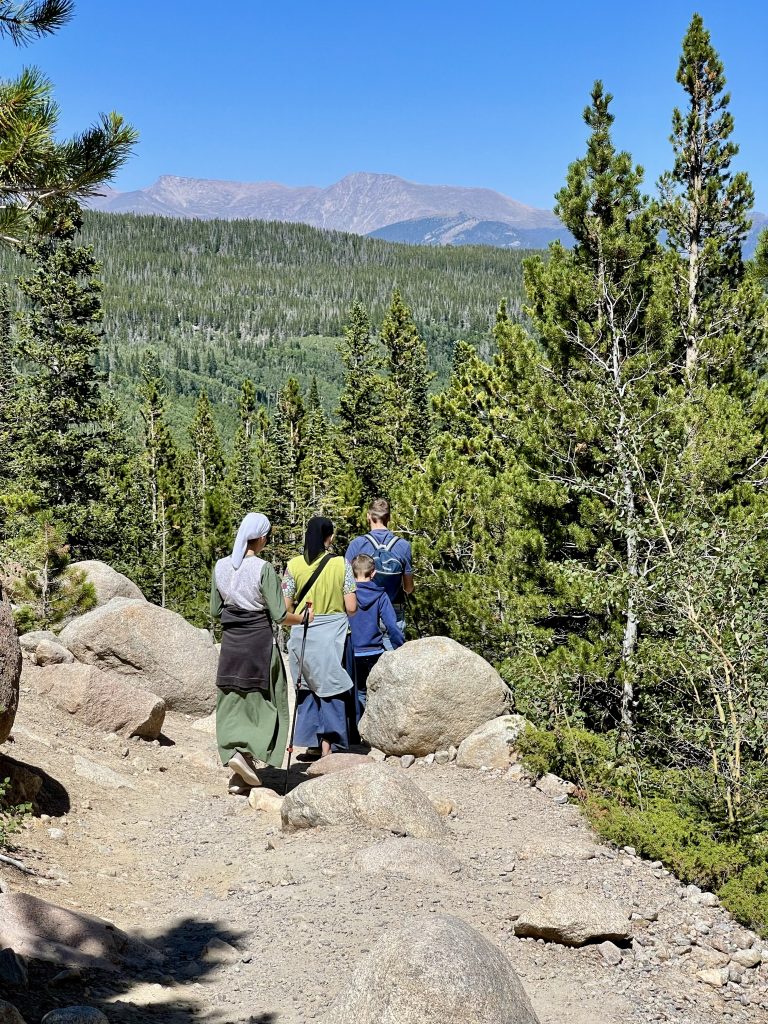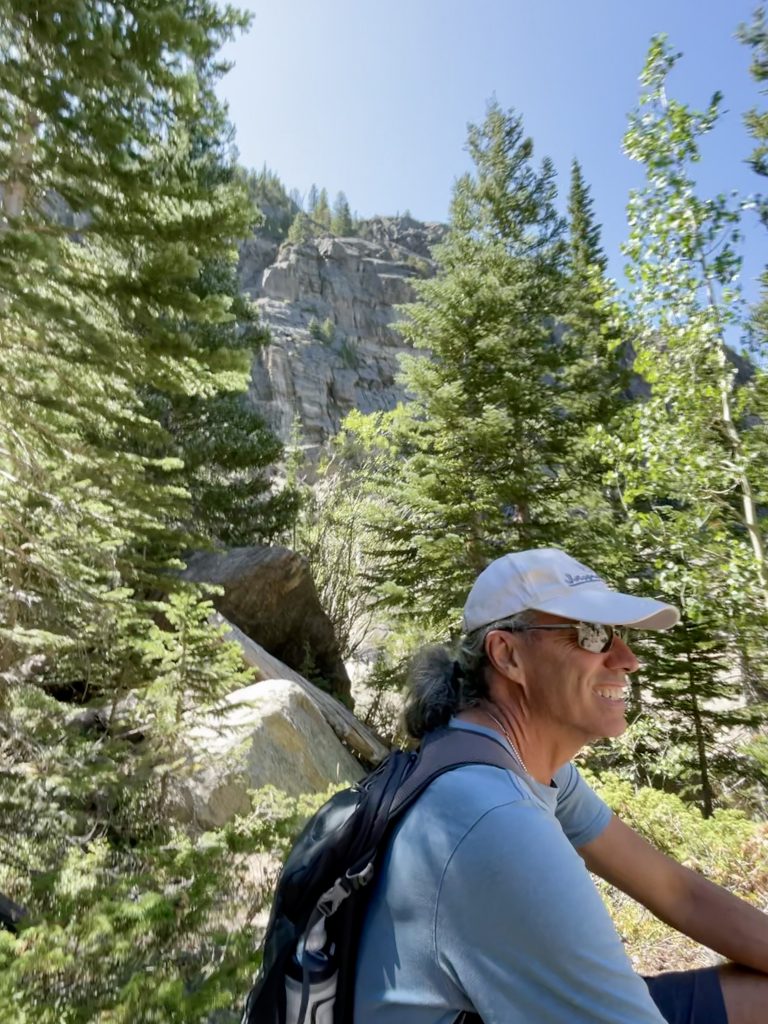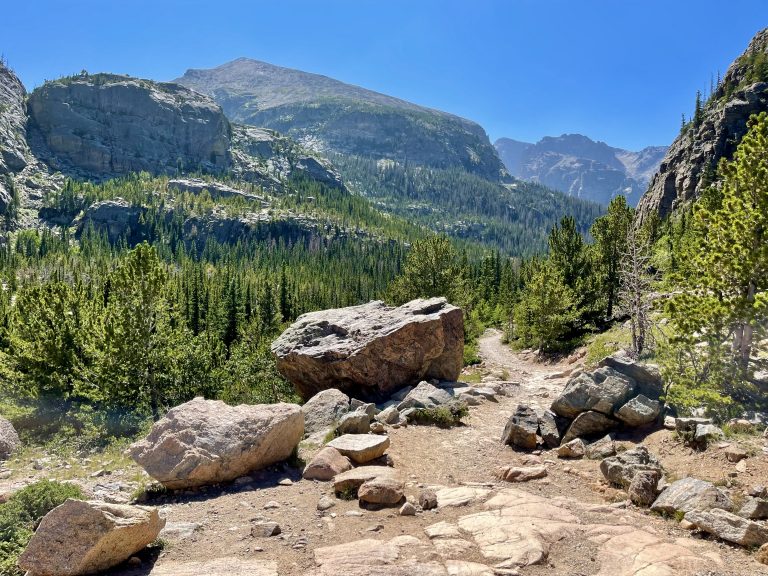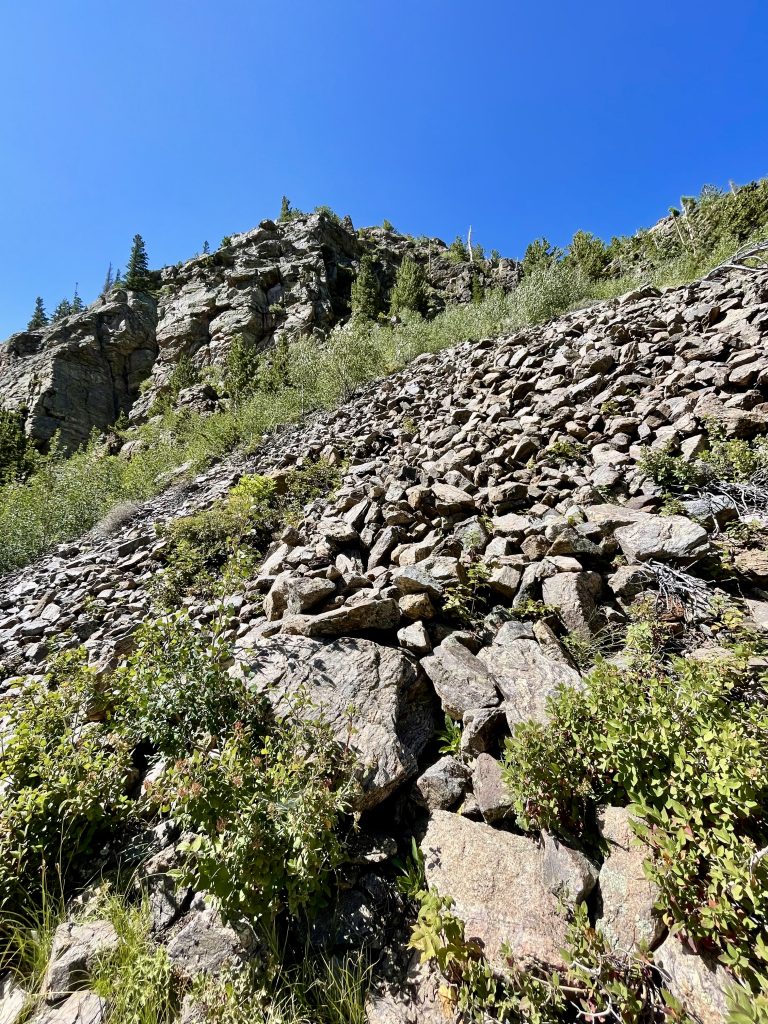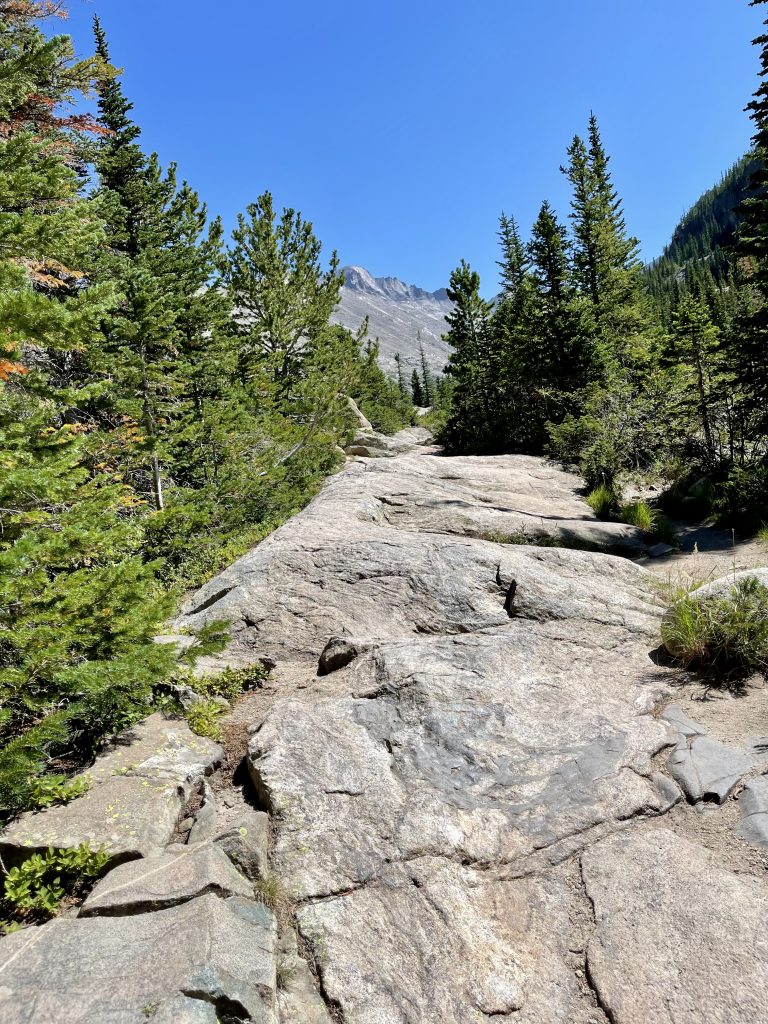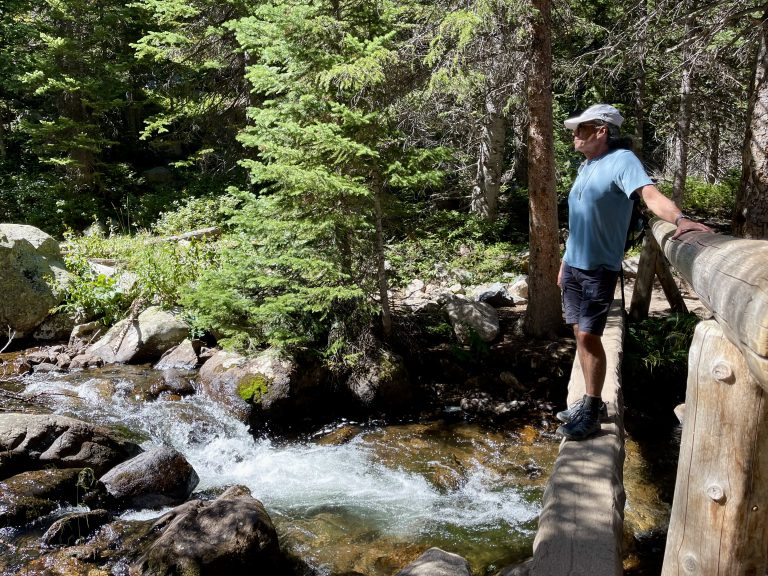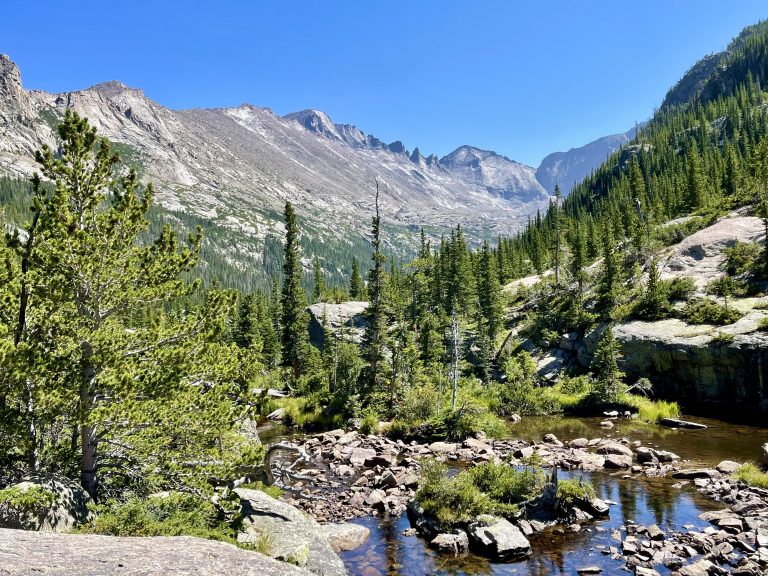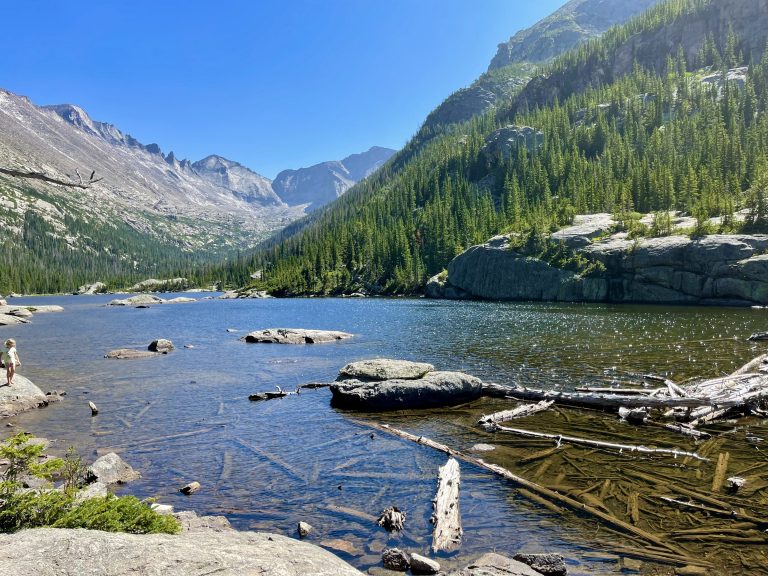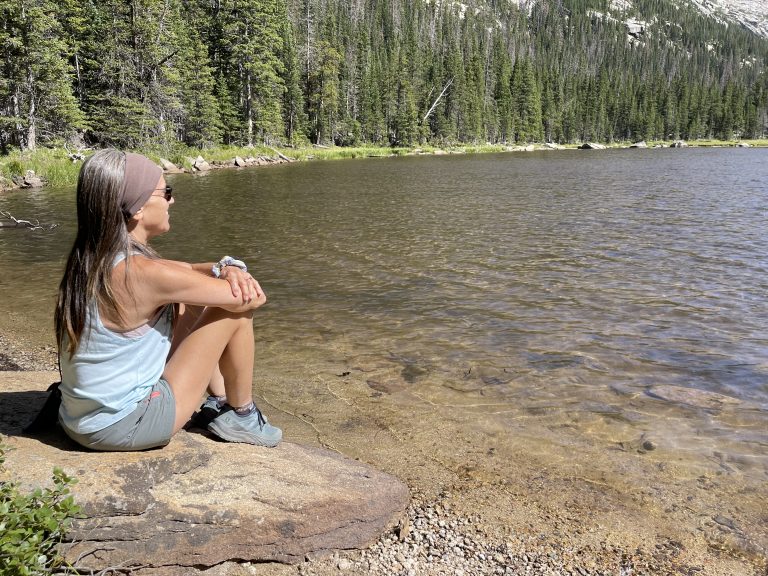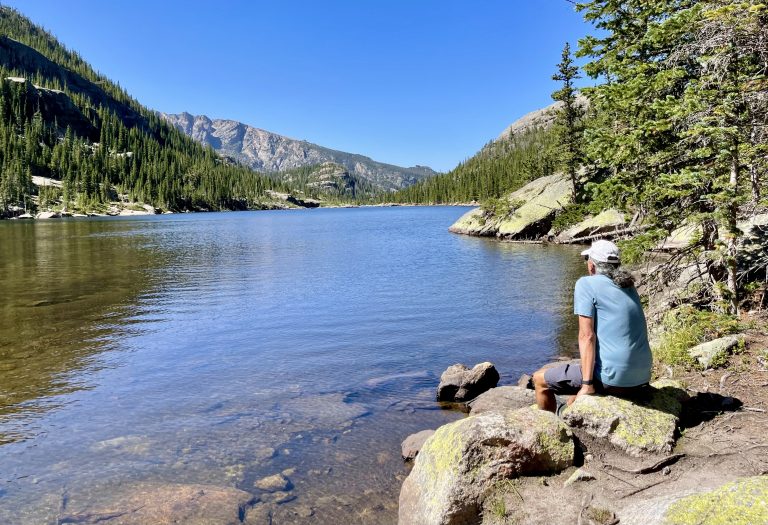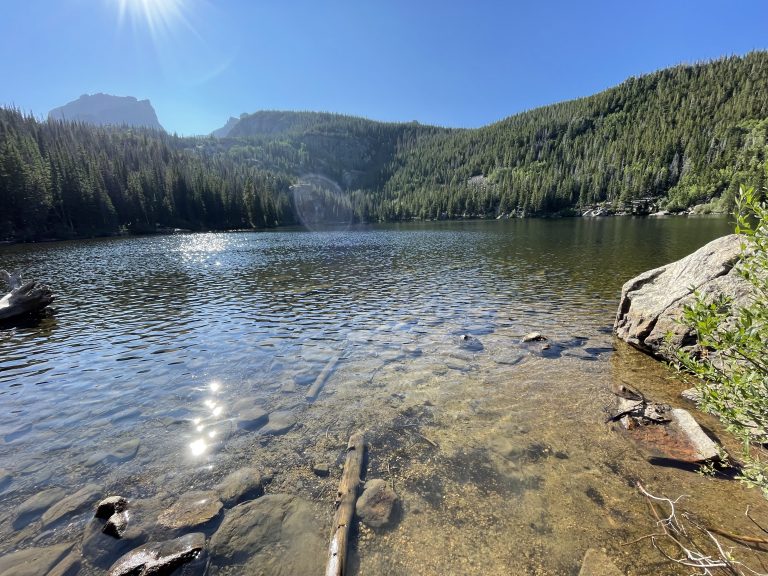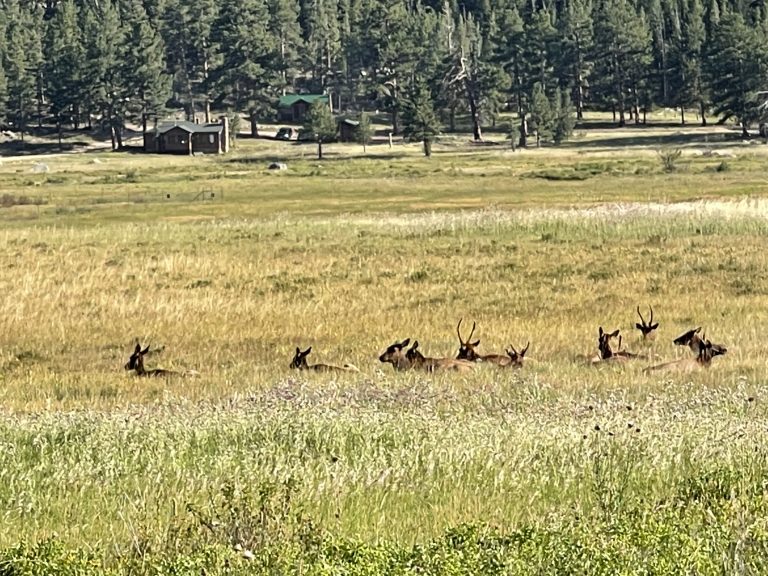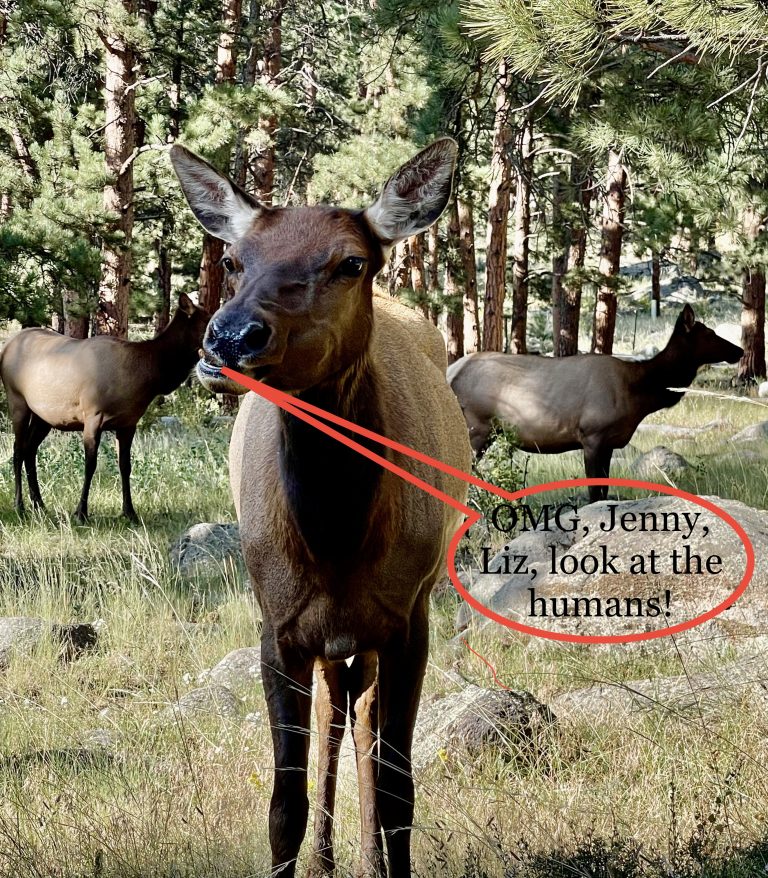August 25, 2021
There’s a phenomenon I’ve noticed with campers, as well as boaters who anchor. If there is a large empty area to be in (like we were), new people coming in will tend to congregate near someone already there. We’d found a nice campsite in a completely empty section of a large campground. At least 25 sites near us were empty. By nightfall, a group of three girls set up camp right across from us and a little while later, another group of four set up camp right next to us. Perhaps it has something to do with feeling safer being near others or maybe it’s an assumption that those who arrived earlier must know that this is the best section. We don’t really mind the company but we’ve found that most new campers (and it seems like that’s most of them now) don’t have camping etiquette down yet. Sure enough, the girls giggled and talked loudly until at least 11:30 pm, long after quiet time. Had they been two or three campsites away, we’d never had heard them.
We woke to a surprisingly cold 39 degrees out (we were still at almost 9,000 feet elevation) and were glad we’d packed up the night before and just had to wash up and leave. Within minutes, we’d turned into the tiny and prosperous-looking nearby town of Grand Lake, Colorado and found coffee. A few minutes later, we were headed down the road that leads into Rocky Mountain National Park. I’d never been to RMNP before and Susan hadn’t been there for over 40 years and we both really looked forward to it.
Parts of the park had burned last year during the East Troublesome Fire and we were told by a ranger at the campground the night before to expect widespread damage. We steeled ourselves for some disappointment. But we saw evidence of only limited fire damage near the western entrance to the park and after just a few miles we saw no more.
As Northern Californians we’d grown used to seeing fire damage across hundreds of thousands of acres (indeed, the Dixie Fire near our home had already burned close to a million acres) so 20-some thousand acres of charred trees seemed pretty nominal to us.
It was still early and there was almost no traffic in the park, which we didn’t expect. The park routinely gets four million visitors a year and you can’t even get into the park without either a reserved daily pass or a reserved camping spot—Susan had managed to snag the last campsite available so we were good to go.
About 10-15 miles from the park’s entrance, we stopped at a short trail to Lake Irene. Just as we reached the lake, we saw a cow moose nervously looking at us and two more moose then disappear up a steep hill. It’s surprising how nimble big moose can be.
A few minutes later we spotted a fourth moose—this time an unconcerned bull moose grazing on a nearby hillside, fattening up for the long winter to come. Bull moose are not to be trifled with during the fall rutting season and this one showed no fear as he munched a few hundred feet away.
By now it was about 9:00 am, sunny and hitting 50 degrees as we continued up 48-mile-long Trail Ridge Road—the highest continual highway in the U.S. It wasn’t long before we were driving above the tree line and arrived at a visitor center located at nearly 12,000 feet elevation.
Our second trail of the day was the short and paved but steep Alpine Ridge Trail that led us huffing and puffing (the trail is nicknamed “Huffer’s Hill”) from the parking lot across the tundra up to a stunning 360-degree vantage point with granite mountains all around us. A cold wind blew the tiny grasses and lichens and thoroughly chilled us. Even in late August and there were still a few patches of old snow near the peaks. We knew it wouldn’t be long until new snow began to fly.
Back at the warm truck and down the other side of the pass, we drove for about 15 minutes till we reached the Forest Canyon Overlook where we found our third trail of the day—a short hike to a viewpoint that overlooked a huge and majestic glacier-carved valley with a hanging lake. A few marmots played and whistled in the rocky outcroppings. By now it was after 10:00 am and we found a place to make a late leisurely breakfast/early lunch on a sunny picnic table.
Afterwards, we continued along Trail Ridge Road, stopping here and there to take in the scenery, until we reached the turnoff to our campground. We hoped to check in early and rest there briefly before tackling another, much longer trail.
We had low expectations for our campsite since we had the last available reservation and were pleasantly surprised to find that it actually was one of the better sites there, though we figured once the visitors staying at the all-too-close adjacent site arrived we might feel differently.
The day’s big hike would be at the eastern end of the park to a place called Mill Lake. The fourth trail of our day was only six miles round trip and about 1,100 feet of elevation gain but the trailhead was at 9,100 feet so we knew the hike would be a bit of a challenge. The park recommended taking a shuttle from the campground to the trailhead parking lot, but we decided to try to drive and hoped for a parking spot. Because the only way to get to the trailhead was not only to have a basic park entrance reservation but also a special permit or a campground reservation allowing access to this section of the park, we were hopeful the parking lot and trail would not be too crowded. A car pulled out of a spot just as we arrived, freeing up the very last spot. This was an excellent start.
The trail began by crossing a rushing creek, and then headed into a stunted grove of beautiful aspen that leaned over and nearly made a tunnel for us to pass through. From there, the trail climbed beside the creek in a wide and well-maintained path, going through dense forests of pine and fir until suddenly pausing at a gushing waterfall at less than ½ mile from the trailhead. Whoever designed this trail, we thought, really knew what they were doing.
There were more people on the trail than we’d expected (they obviously took the shuttle) and a number of them were at the waterfall. From the lack of backpacks, and lack of hiking boots for many, it was apparent that most of them were going no farther.
We continued uphill for a couple more miles, stopping to catch our breath multiple times along the way. And we were correct—we saw many fewer and far heartier hikers as we headed up.
The trail narrowed as we traversed the edge of the mountainside with steep drop-offs. At a few spots by the trail there were massive piles of jagged rock that had fallen during avalanches.
When we took a break in a shady spot by a log bridge across a creek, we met a woman coming back down the trail. She recommended we extend our hike a bit after Mill Lake by hiking to the far end of the lake and then along a trail to a second, smaller lake. The woman was at least our age, had a brace on her knee and was limping slightly but spoke excitedly about the smaller lake. Even though this was our fourth hike of the day we figured if she could make it to the second lake we should be able to as well.
We heard the sound of rushing water and headed to the edge of a boulder field where we sat on a large rock overlooking a wide stream at the outlet of the lake. We were amazed to see giant three- and four-pound trout from our vantage point 75 feet above the incredibly clear water.
Farther on, the trail wound around more boulders with granite peaks looking down from a mile away. Mill Lake was crystal clear and a light breeze rippled the water.
Following our “always go a little farther” motto, we headed to the second lake. It wasn’t too long before little Jewel Lake came into view, beautiful at the base of a glacier-scoured bowl.
We rested there, listening to the wind in the pines and gazing at the diamonds shimmering on the water before heading back down the trail. We agreed this was one of the most beautiful places we’ve been. Given where we’ve been, that said a lot.
When we reached the parking lot, we decided to check out Bear Lake, a little farther down the road we were on. The .6-mile Bear Lake loop trail is one of the most popular trails in the park and we decided to find out why. Even though it was late afternoon and the parking lot was much bigger at this trailhead, parking was still challenging. We circled the lot and, just as we were about to skip it and leave, a car pulled out and we pulled in.
As we stepped out of the truck, we both felt a rush of exhaustion but decided we’d tackle the fifth hike of the day. We’d barely hiked ¼ mile when we decided to turn around—it wasn’t as pretty as where we’d just been and the crowds were too much for us. The popularity of the trail, we concluded, must be based on how easy it was for families with children and non-hikers to see this beautiful subalpine lake.
Curiously, the campsite adjacent to ours remained unused all night. It was the quietest national park campground we’d ever been in. A couple of times during the night we were awakened by the sound of bugling elk nearby.

